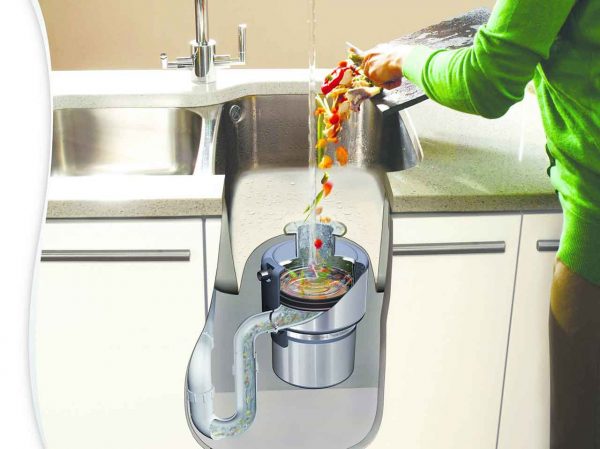There is a certain convenience of being able to scrap plates of discarded food directly into the sink and let a garbage disposal unit grind it all down. These units though do come with some caveats.

Upsides of Having a Garbage Disposal
Meal clean-up is easier.
You can scrape small amounts of food into the sink instead of having to carry plates to the trash and scrape them there. Thereby skipping the step of first taking dirty plates to the trash. There is less likelihood of dripping gravies/sauces or dropping crumbs if plates get rinsed in the sink.
Protecting Your Pipes
A garbage disposal lets you grind down food debris into small particles that are less likely to get stuck in the pipes.
Inexpensive
Installing one is a routine and relatively low-cost job for an experienced plumber. When used correctly, a garbage disposal lasts about eight years.
They can work with most sewage systems, even septic tanks
If you have a septic tank, make sure the disposal unit is sized correctly and regularly maintained. Having a professional plumber install it will assure you that it is the right size for your septic tank. The infrastructure of some older municipal or town sewage systems means you may need to consult the waste management in your area.
Downside of Having a Garbage Disposal
Specific use
There are certain food groups that belong nowhere near a garbage disposal. Fatty foods like cooking oil, butter and cream sauces will over time clog your pipes. Starchy food like beans, pasta and rice can gum up your pipes or your disposal. Foods that have peels, like bananas and potatoes, root vegetables like carrots are hard for the unit to grind up. Also trying to put bones or fruit pits down the disposal will shorten its lifespan. Some foods are better off in the trash. Garbage disposals are for small amounts of food.
Properly running your disposal
Turn on the cold water first, then start the disposal with it running. Slowly put in small amounts of food waste. When finished, turn off the disposal and let the water run for another 10 to 20 seconds to flush any remaining food particles through the disposal and down the pipes.
Need for weekly cleaning
Even when used correctly, some food particles can end up clinging inside the unit, which leads to decay and smelliness. Once a week, turn off the disposal, wipe down the inner ring around the opening to the drain or disposal. Use a brush to clean the inside of the disposal. To have it smell nicer, make ice cubes with vinegar or cut up small pieces of lemons and let the disposal grind them up.
They can clog and jam
Putting the wrong types of food down the disposal or trying to stuff too much food into your disposal can cause it to jam. If it jams, try pushing the reset button. Jams and clogs are one of the realities of having a garbage disposal. You can try fixing it yourself, remembering to turn the water and disposal OFF first, or call a professional plumber at Jersey Plumbing.
They can break
If one part of a disposal unit breaks or cracks, you generally need to replace the whole unit.

If you are committed to the regular cleaning and food disposal limitations of a garbage disposal then it will be a benefit to you and your family. However, if it seems like its limitations would not benefit you, the trash can is the best option.

Recent Comments